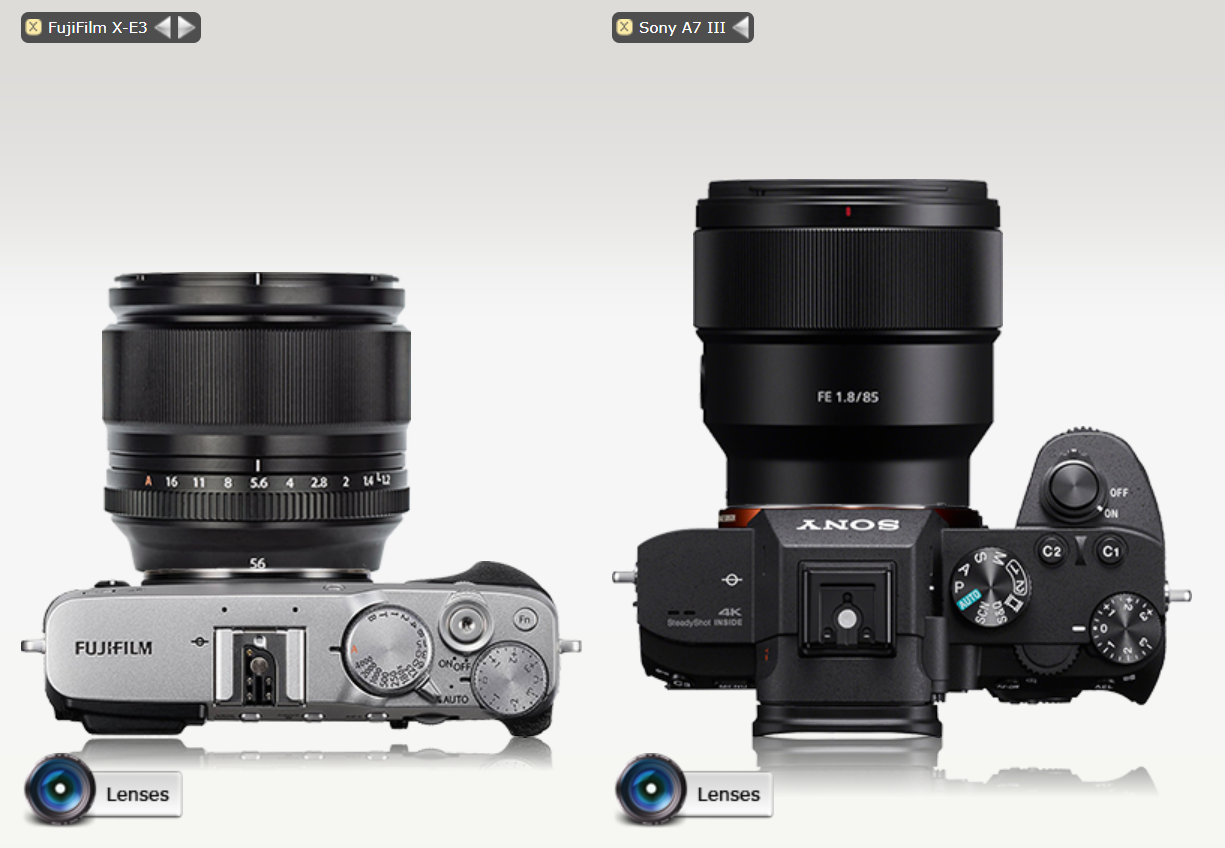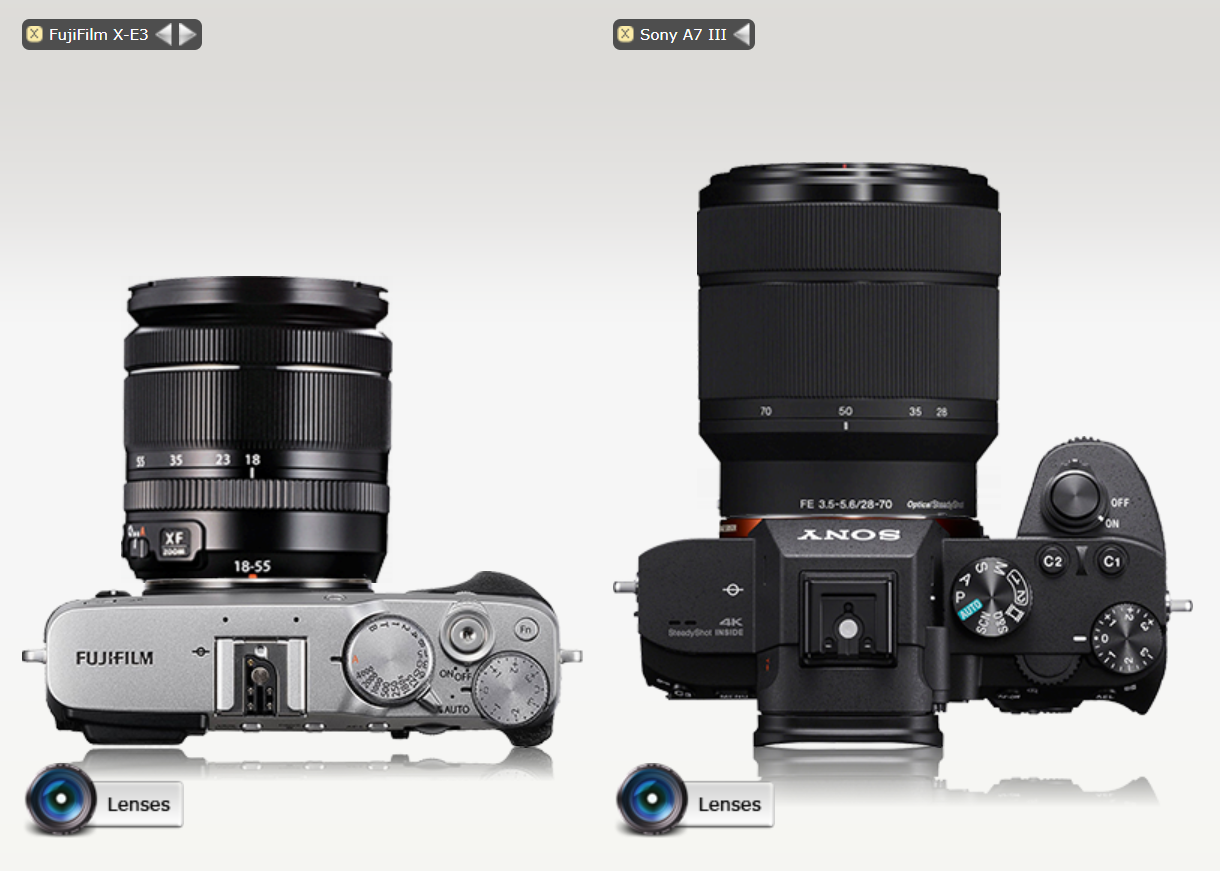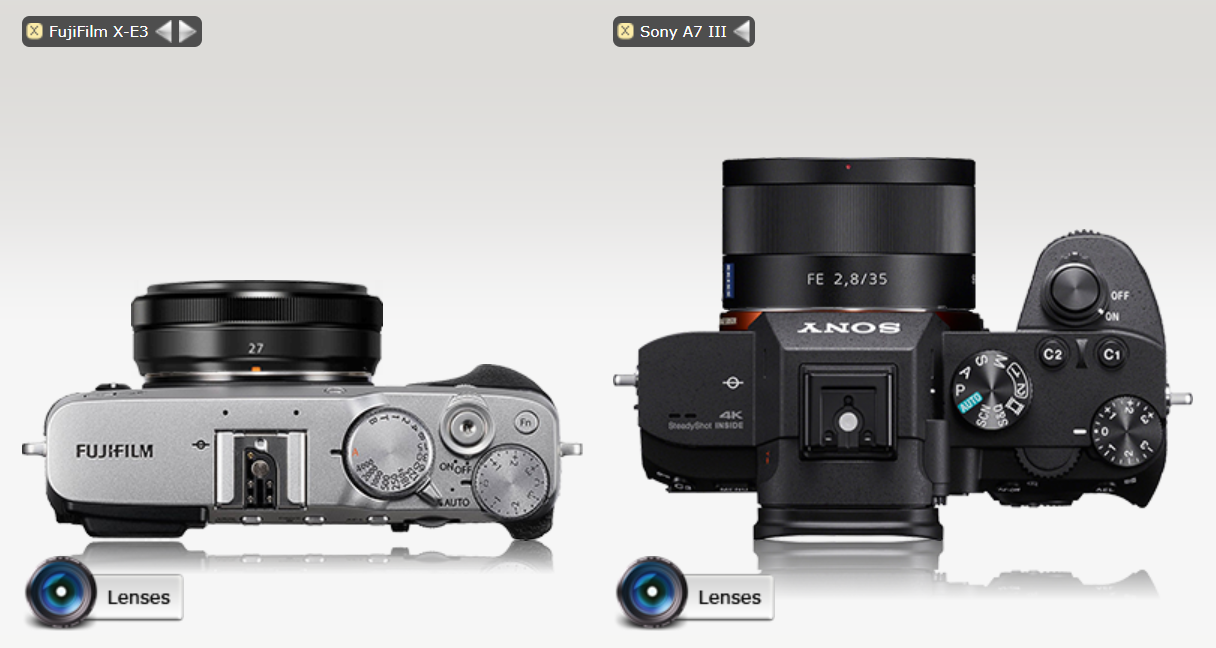Full Frame vs APS-C
2019-01-14
When choosing a new camera I typically look at bodies with full frame (FF) sensors. I see them as being a good balance of size and performance compared to APS-C and medium format.
However I’ve recently been placing more value on having a camera which can be with me more often, which means size and weight have become more important. I’ve considered small full frame options like the Leica Q, but ideally I still want interchangeable lenses. I've considered the Leica rangefinders, and have owned them in the past, but currently in my life I value autofocus. So I’ve been thinking about moving to APS-C.
While considering this I realised that I didn’t fully understand the compromises I’d be making. The more I considered what I thought I knew, the less it seemed to make sense. So I did some research and stumbled across an excellent essay on equivalence by Joseph James:
http://www.josephjamesphotography.com/equivalence/
The essay is great, and extremely thorough, but it is also quite long and intimidating. I wanted to write an abridged version for my own benefit, focusing on the questions I needed answered.
The Questions
-
Does Full Frame have lower noise than APS-C?
-
Does Full Frame have a shallower depth of field than APS-C?
-
Are APS-C lenses smaller than Full Frame lenses?
-
Are APS-C lenses cheaper than Full Frame lenses?
-
Are APS-C manufacturers being misleading in their lens descriptions?
-
Do I really need Full Frame?
What you need to know
The crop factor of an APS-C sensor is, generally speaking, about 1.5. That means a FF sensor is 1.5 times wider and 1.5 times taller than an APS-C sensor.
When you take a photo with a 50mm f/2 lens on a FF camera it has a certain field of view and a certain depth of field. For the sake of this example, let’s assume we’re at a shutter speed of 1/100th of a second which is required for the photo we want to take. And let’s say we are at ISO 100.
When the same lens is put on an APS-C camera, it is still a 50mm f/2 lens and the depth of field remains identical. You will still get a correctly exposed image at 1/100th of a second and ISO 100. However because the resulting image is cropped relative to the FF image, the field of view on the APS-C camera is narrower, and actually the equivalent of using a 75mm lens on a FF camera. You multiply the focal length by the sensor’s crop factor to work this out. 50mm x 1.5 = 75mm.
However using a 50mm f/2 lens on an APS-C camera is not the same as using a 75mm lens with an f/2 aperture on a full frame camera. A 50mm f/2 lens has a 25mm effective aperture diameter (50mm/2), where as a 75mm f/2 lens has a 37.5mm effective aperture diameter. The 75mm f/2 lens therefore has a shallower depth of field than the 50mm f/2 lens, and lets in more light.
The FF “equivalent“ of a 50mm f/2 lens lens is in fact a 75mm f/3 lens, which you get by also multiplying the aperture by the crop factor. Aperture f/2 x 1.5 = f/3. Using a 50mm f/2 lens on an APS-C camera will give you the same field of view, and the same depth of field as using a 75mm f/3 lens on a FF camera.
However, keeping our shutter speed and ISO fixed, the 75mm f/3 lens will produce an underexposed image on the FF camera relative to the 50mm f/2 lens on the APS-C camera. We will need to increase our ISO to ISO 225 on the full frame camera to compensate. We work this out by using the crop factor squared: ISO 100 x 1.5 x 1.5 = ISO 225.
At this point we have our APS-C camera with a 50mm f/2 lens at ISO 100, and our FF camera with a 75mm f/3 lens at ISO 225. If we take a photo with each, the resulting photo will have the same field of view, the same depth of field, and the same final exposure. It would be difficult to tell which photo was taken with which camera in a blind test.
But wait a minute, the FF camera is at a higher ISO than the APS-C camera. And higher ISO images usually have more noise and less dynamic range, right? So does the APS-C camera have an advantage here?
In fact, if we’ve had to change the ISO to maintain exposure, is the 75mm f/3 lens on FF really equivalent to the 50mm f/2 lens on APS-C?
Let’s dig a bit deeper.
The key is that the same quantity of light is passing through both the 50mm f/2 lens and the 75mm f/3 lens and hitting each sensor. However:
Exposure = Total Light / Sensor Area
The FF sensor has a larger area overall, so the same total light is spread out over that larger area. This produces a lower exposure, which in turn requires a higher ISO to amplify the signal and make the final picture correctly exposed.
But, crucially, sensor noise is a factor of the sensor efficiency and the total light hitting the sensor, not the ISO. If the FF and APS-C sensors are of the same generation and technology then they will have approximately the same efficiency, and as we’ve already established the total quantity of light hitting each sensor is the same. Therefore the amount of noise in the final image will also be the same.
So in our example ISO 225 on the FF camera has the same noise as ISO 100 on the APS-C camera. The FF camera in fact has the advantage. ISO 100 on the FF camera will have lower noise than ISO 100 on the APS-C camera, because for the full frame camera’s output image to be correctly exposed at ISO 100 there must be more light falling on the sensor compared to the APS-C camera at ISO 100.
This is still a simplification of the full picture, but for more information I suggest getting stuck into Joseph James’ article linked at the top. Thankfully, the above is sufficient to answer our questions.
The Answers
Does Full Frame have lower noise than APS-C?
We can now say that yes, generally speaking, for sensors of the same generation and with the same technology, the FF sensor will show lower noise for the same ISO setting compared to the APS-C sensor.
Of course in reality a more recent APS-C camera could exhibit less noise than an older FF camera. And if the sensor technologies are different in the two cameras the results might also be different.
But generally speaking, the answer is yes.
Does Full Frame have a shallower depth of field than APS-C?
As we demonstrated above, not if you are using an equivalent lens. However, in reality there may not be an equivalent lens for the APS-C system.
If you are using the Leica 75mm f/1.25 Noctilux, you would need a 50mm f/0.83 lens on your APS-C camera to take the equivalent photo. Good luck finding one of those.
So full frame generally gives you the option of having a shallower depth of field than APS-C.
Are APS-C lenses smaller than Full Frame lenses?
Equivalent lenses on each system will, generally speaking, be about the same size because they both need the same effective aperture diameter.
However APS-C lenses ranges will often appear smaller because they aren’t made to have aperture diameters as large as their FF counterparts. For example most manufacturers will have a range of f/1.4 primes as their “fast” primes, but the f/1.4 APS-C primes are really the equivalent of f/2.1 primes on FF systems, and so have smaller effective aperture diameters, allowing them to be physically smaller.
While this means in theory you can get equally small FF lenses by buying smaller aperture lenses, often the slower lenses on FF systems will be aimed at a more price-conscious market segment and may therefore have a lower image quality, while the faster primes will aimed at the professional market and consequently designed to a higher standard.
Therefore if you want a lens which is both compact and of the highest quality, an APS-C system might actually be a better place to look. Alternatively look for a FF system that builds all their lenses to the highest standards, such as Leica.
Are APS-C lenses cheaper than Full Frame lenses?
This answer is similar to the answer about lens size. In theory APS-C lenses would not be any cheaper than their FF equivalents, but in practice because APS-C lenses are often have a smaller effective aperture diameter than their FF counterparts they can be cheaper to design and build. For example an f/1.4 APS-C prime has a smaller aperture diameter than the f/1.4 FF prime, making it potentially less expensive.
However APS-C lenses can also be more expensive than their FF equivalents, as lenses with short focal lengths and wide apertures can be more complicated to design and build and the FF equivalent with a longer focal length and smaller effective aperture diameter.
And finally, the APS-C lens could be more expensive simply if it is designed to a higher standard than the FF equivalent from another manufacturer.
Are APS-C manufacturers being misleading with their lens descriptions?
Some people say the APS-C lens manufacturers are being misleading by only quoting the FF equivalent focal length, but not aperture.
I don’t personally think they are intending to mislead. To many customers the FF equivalent lens might simply be the focal length that will give them the same angle of view and the same final exposure for a given shutter speed and ISO. That is a perfectly reasonable definition, and keeping the FF equivalent f-stop the same would be correct for those customers’ expectations.
I think the manufacturers have simply chosen to use the “simpler” definition of an equivalent lens.
Do I really need Full Frame?
I’m obviously ignoring other sensor sizes like Medium Format or Micro Four Thirds here, but the same arguments could easily be applied for those.
If size, weight and cost are a concern, then APS-C could be the better choice. But not because of the lenses. A small APS-C body like the Fujifilm X-E3 is 337g, where as a small FF body like the Sony A7III is 650g by comparison and also physically larger.
Here are some specific examples with lenses using camerasize.com:
Portrait Lens
The Fujifilm 56mm f/1.2 lens is 407g, and while the Sony equivalent 85mm f/1.8 is lighter at 371g, the total combined weight including the body is 744g vs 1021g respectively, making the Sony setup both heavier and larger.

Travel Zoom
The Fujifilm 18-55mm f/2.8-4 travel lens is 310g, while the closest Sony equivalent 28-70mm f/3.5-5.6 is again lighter at 295g. The combined weight still favours the Fuji at 647g vs 945g.

Compact General Purpose Prime
The Fujifilm 27mm f/2.8 pancake lens is 78g, while the closest Sony equivalent is the 35mm f/2.8 at 120g. The combined weight is 415g and 770g respectively, favouring the Fuji setup. Note that the Sony has a larger maximum effective aperture diameter which gives it an inherent size disadvantage. However it's worth mentioning that the Fujifilm with the pancake lens is small enough to fit into a pocket while having a very useful 40mm equivalent focal length.

When you are looking at minimising size, weight or cost the Fuji APS-C setup appears to beat the Sony full frame setup, but the surprise is that the reason is usually due to the smaller, lighter and less expensive APS-C bodies rather than the lenses.
Conclusion
Full frame gives you the option of having larger effective aperture diameters, allowing more total light to reach the sensor, which in turn results in less noise and a shallower depth of field.
But if you’re not going to use those larger aperture FF options, perhaps because of size, weight or cost constraints, or because it doesn't match your style of photography, then you will not see any significant difference in output between full frame and APS-C.
And of course you will be able to take fantastic photos with either sensor size. As usual, the person behind the camera is a far bigger limiting factor than whether the camera is APS-C or full frame.